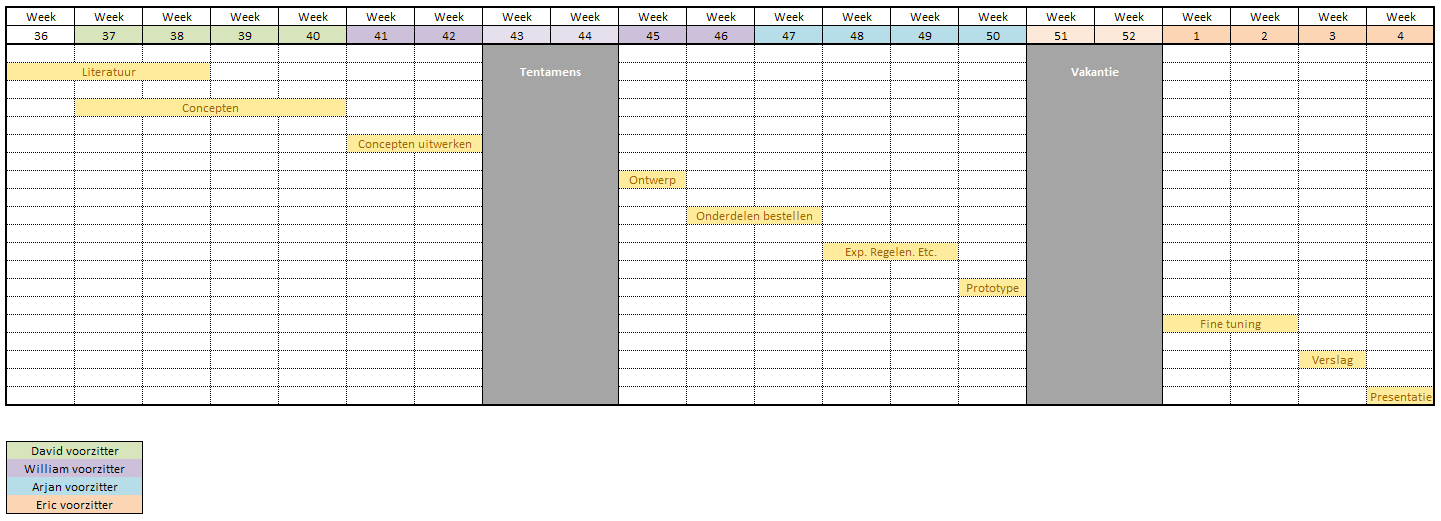From Control Systems Technology Group
Jump to navigation
Jump to search
|
|
| (2 intermediate revisions by 2 users not shown) |
| Line 24: |
Line 24: |
| </h1><br/> | | </h1><br/> |
| {{:Viotar_Menu}} | | {{:Viotar_Menu}} |
| | |
|
| |
|
| |width="2%" style="background-color:#FEF5DE;"| | | |width="2%" style="background-color:#FEF5DE;"| |
| Line 31: |
Line 32: |
| </h1><br/>Welcome to the wiki page of the Viotar project group. On this page we will keep track of our progress during the project. This way everybody can see the progress we’re making on the Viotar and we can organize the information we gathered. Feel free to take a look around. <br/> In order to keep the wiki organized we divided it into several sub pages. By clicking the links in the textbox on the left the other page’s can be viewed. This front page only contains the global information, like the planning and approach of the problem. | | </h1><br/>Welcome to the wiki page of the Viotar project group. On this page we will keep track of our progress during the project. This way everybody can see the progress we’re making on the Viotar and we can organize the information we gathered. Feel free to take a look around. <br/> In order to keep the wiki organized we divided it into several sub pages. By clicking the links in the textbox on the left the other page’s can be viewed. This front page only contains the global information, like the planning and approach of the problem. |
| |} | | |} |
| | | <br/> |
| | | {| cellpadding="10" |
| | | |-valign="top" |
| | | | style="border:2px solid #00FF33; background-color:#CCFF99"| |
| == Motivation== | | == Motivation== |
|
| |
|
Latest revision as of 15:00, 23 March 2011
|
|
Viotar project group - Main page
William Schattevoet
David Duwaer
Eric Backx
Arjan de Visser
|
|
|
|
|
|
|
Motivation
During the last century electronic instruments became immensely popular, the electronical guitar as an excellent example. Electronic bowing instrument on the other hand never really became popular. This leads to the questions, why didn’t the electronic bowing instrument become as popular as the electronical guitar? There are several reasons that can explain this phenomenon. The existing electronical bowing instruments are modeled the same way as the traditional acoustic bowing instrument. Therefore these instruments also have the same shortcomings and difficulties the traditional acoustic bowing instruments have. These shortcomings are:
- Very difficult to play (a wrong combination of bowing speed and bowing force results in a scratching sound).
- The traditional acoustic bowing instrument have a very limited sound range.
- It’s impossible to play chords, at most 2 strings at the same time.
- The traditional acoustic bowing instrument don’t have the good ergonomics guitars have.
These points motivated us to make an electronical bowing instrument that doesn’t have these shortcomings. This means that we want to make an instrument which can play chords. Or, to be more specific, an instrument on which more than 2 strings can be excited at the same time. Therefore it is not possible to use a bow anymore, because with a bow it’s only possible to excite 1 ore all strings. Because of this the ergonomics of the traditional acoustic bowing instrument can be changed into something more hand able.
With the new instrument exciting the string with the right combination of bow force and bow speed is not longer the responsibility of the player. The Viotar has to make sure that the right combination of bow force and bow speed is used. These demands imply that some kind of mechanical bowing device has to be used to excite the strings. This device has to be able to bow all combinations of strings and do that with the right combination of bow force and bow speed. These demands also made us decide that a electronical guitar would be a good instrument for a prototype.
List of demands
From the above stated properties of the Viotar the next quantities are formulated:
- The sound had to be generated by the strings and after that it gets electronically processed.
- All the strings can be excited in every combination ore at the same time.
- The amplitude of the note can be varied from the minimum to the maximum during the excitation of the string. The minimum and maximum are set by the bowing pressure and force at which Helmholtz is reached.
- The Viotar must be capable of playing 18 different notes each second on one string.
- The Viotar must be capable of playing 18 different notes on different string separately.
- The string is always excited in such way that Helmholtz occurs, regardless of the player’s skill.
- The Viotar is also playable as a normal guitar. Therefore is must be possible to excite the string manually on the Viotar.
- The Viotar’s tone reach has to be from base to soprano, the lowest note has to be lower than E4, and the highest note has to be higher than A5.
Road map
To tackle the stated problem, the following road map has been made. The planning that follows later, is also based on this road map.
- Concept
- What do we want?
- Why? (motivation)
- Definition
- Design
- Literature
- Model
- Controller + mechanics
- Doing experiments with different types of mechanics and choose one
- Ergonomics
- Doing experiments with different ergonomics
- Final design
- Preparation
- Order parts for prototype
- Production
- Evaluation
Planning
|
De tijdsplanning van het Viotar project.
|
|
|
